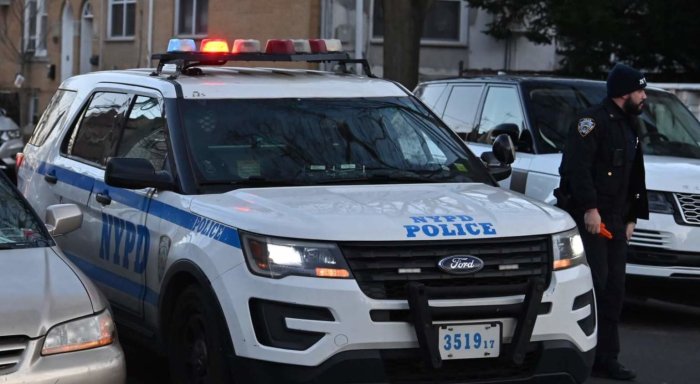By Daniel Arimborgo
Making good on a promise to fight the banking industry's financial exploitation of its customers, City Council Speaker Peter Vallone (D-Astoria) has introduced legislation to ban ATM fees at banks where customers have no accounts.
The proposed law will prevent bank customers from incurring a double charge – from their own bank as well as the bank whose ATM they use.
“We believe banks are guilty of charging twice the reasonable rate of fees to customers,” Vallone said.
The practice can cost patrons up to $3 a withdrawal at some banks. If a patron makes a $20 withdrawal, the surcharge amounts to 15 percent.
The bill, introduced in the City Council last Wednesday, would still allow banks to charge their customers when they use an ATM of a competitior where they have no account. But the law would bar that bank from charging a fee.
It would also impose a maximum fine of no more than $250 the first day and after three days. Banks found in violation would be subject to additional penalties of between $500 and $1,000.
At a news conference at City Hall last Wednesday, Vallone used two pie charts to show that 87 percent of the city's bank charge non-customers for using their ATMS, while the other revealed that 80 percent charge their own customers fees for using another bank for ATM transactions.
According to City Council spokeswoman Carolyn Daly, the bill could become a law within five months, following public hearings with bank industry officials and debate in the Council.
The survey of 45 banks was conducted by the Council's Committee on Finance and the Committee on Consumer Affairs in November and December.
Surcharges were rare until 1996 when, under pressure from the banking industry, networks ended their no-surcharge policy. The report said customers' withdrawals cost banks only about 27 cents per ATM transaction compared to more than $1 for a human teller's labor cost.
The survey also found that 41 percent of the banks that impose surcharges for non-customers operate 49 percent of the teller machines in the city.
City Councilman John Sabini (D-Jackson Heights) compared the industry's ATM fee practice to the strategy of infamous bank robber Willie Sutton, who robbed banks for a living.
“The roles are reversed now,” Sabini said. “The banks are holding us up.”
The City Council's report, “Guilty as Surcharged,” noted that banks are already compensated for the cost of ATM transactions though an interchange fee, a charge paid by a customer's bank to the bank where their visiting transaction occurred.
Bank customers “shouldn't be slapped with the extra surcharge,” said Councilwoman Karen Koslowitz (D-Forest Hills), Consumer Affairs Committee chairwoman. “This is not what bank customers bargained for when banks began replacing live tellers with ATM machines.”
Koslowitz described how for those making about $20,000 a year a $2.50 surcharge could pay for a meal.
Vallone said the city has the authority to ban ATM surcharges under the Federal Electronic Fund Transfer Act, which permits municipalities to enact their own laws to protect ATM consumers from unfair practices.
“We do what the federal government does not do,” said Council member Walter McCaffrey (D-Woodside), a chief sponsor of the bill.
“The banks complained when we legislated safety requirements at ATMs and they will complain when we ban surcharges,” he said. “But like the exorbitant fees they charge for checking and savings accounts, they see a cash bonanza with ATMs,” McCaffrey said.
Asked whether the bank industry's reaction would be the same as in California, McCaffrey said “the fact of the matter is that when these changes are implemented, banks make idle threats.”
He added that with thousands of banks competing in the city, it was “highly unlikely that the banks will cut their nose to spite their face.”
When asked what was to stop banks from raising other fees on their customers, McCaffrey said “nothing except the charge of other banks,” implying that market-force-driven competition would stop them from doing so.
California's two largest banks, Bank of America and Wells Fargo Bank, programmed their ATMs in Santa Monica to “lock out” non-customers, following laws there banning surcharges.
Among Queens banks in the report, Astoria Federal has a $1.50 surcharge fee and charges some customers who use other banks' machines a foreign fee not disclosed in the report; Citibank has a $1 surcharge fee, but does not surcharge in low to moderate income areas and charges a foreign fee to some types of accounts; Flushing Savings Bank has a surcharge fee of $1.50 and a foreign fee of $1 for its customers;
Jamaica Savings Bank has no surcharge fee for its customers, but charges 75 cents for using other banks' machines; North Fork Bank has a $1 surcharge fee and a foreign fee of $1.25; Queens County Savings Bank has a surcharge fee of between 50 cents and $1, depending on the type of account, and a foreign fee which was not given by the report; Ridgewood Savings has a $1 surcharge and charges an undisclosed foreign fee to some customer accounts.

































